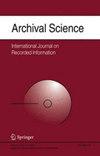Preservation characteristics and restoration core technology of palm leaf manuscripts in Potala Palace
Abstract
There are the richest collections of palm leaf manuscripts in Potala Palace of Tibet in China; they represent very precious cultural heritage with both literature and research value. The study reported in this paper has selected the original palm leaf manuscripts and the photocopies of palm leaf manuscripts in Potala Palace as investigation objects randomly. The investigation of damage status focuses on both media (palm leaves) and handwriting. Results show 11 kinds of deterioration of palm leaf manuscripts. They can be divided into three categories based on the frequency and destructiveness of deterioration: major, minor and occasional deterioration. The purpose of grading is to take targeted measures according to the degree of damage. Restoration and preservation of palm leaf manuscripts in the Potala Palace are relatively complicated because of minimal research on the restoration of palm leaf manuscripts. There are few stable and mature restoration methods that would be used for damaged manuscripts. It is very important to find out the most suitable method for seriously damaged palm leaves before making a restoration plan in order to prioritize appropriately and facilitate long-term preservation and utilization. This study analyzes and demonstrates the feasibility of the restoration techniques for the most damaged, thus laying a foundation for comprehensive practices of the preservation and restoration of the palm leaves in the Potala Palace.

 求助内容:
求助内容: 应助结果提醒方式:
应助结果提醒方式:


